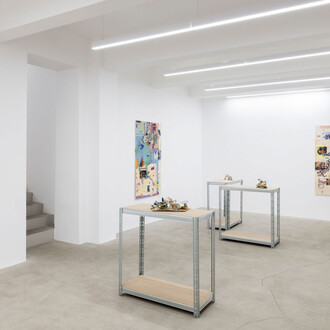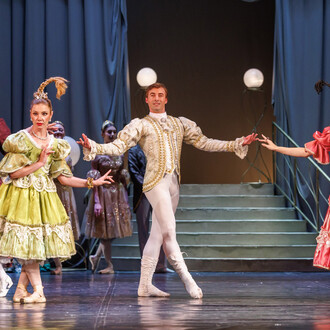Osart Gallery is delighted to present 4 Rings, 2 Centers, an exhibition pivoting around the work of the same name by Robert Morris, (Kansas City, 1931 - Kingston, 2018).
4 Rings, 2 Centers was first displayed at the artist’s first solo show in Milan at the Alessandra Castelli gallery in 1974. This monumental work is made up of six elements and extends over a total length of almost twenty metres. The entire main room of the Osart Gallery premises has been given over to displaying the installation itself and a series of documents related to its first exhibition. In 4 Rings, 2 Centers, the visitor is directly involved: the work almost becomes a suspended threshold, a site of passage that transforms the surrounding space.
Morris’s work interacts with the setting and with the bodies of the spectators, probing the limits of perception.
After an initial interest in dance—influenced partly by the coeval research of his first wife Simone Forti—from the 1960s on Morris began to introduce Neo-Dada procedures into his work. He used big remnants of industrial felt or detritus of various kinds, gradually stripping the artistic product of any aesthetic quality whatsoever while introducing chance as a constituent element. After taking part in the Arte Povera exhibitions of Germano Celant with these types of work, he turned his attention to elementary forms of construction and mechanical processes of creation, introducing industrial materials such as fiberglass and aluminium into his works. Referring to his minimalist works, Giuseppe Panza di Biumo wrote that the most striking element was their ‘intellectual and mental character’. According to the great collector of modern art, in these sculptures reality was stripped of all superfluous elements, allowing the ultimate and profound meaning that links all things to transpire.
Through works of an environmental scope Morris has always redesigned the contexts in which they were set, to the point of interacting with the space by way of strictly architectural forms through which visitors could move freely. One example is his famous labyrinths, for instance the one he designed in 1982 for the Fattoria di Celle in Tuscany.
Robert Morris’s artistic research was always accompanied by academic and theoretical activities, and he contributed to the definition of various trends in American and international art both through his own works and through his extensive writings. He was one of the founding fathers of Minimalism, of Land Art and of the so-called ‘Anti-Form’, that he himself theorized. Direct examples of this are his felts, left to tumble down naturally from the walls so that chance plays an active role in the creation of the works, and the Scatter Pieces, where the installations are made up of detritus piled up to the point of filling entire rooms. According to Morris, sculpture has to be inserted into the space of meaning or the ‘continuum between the monument and the ornament’ and the only element that it must always engage with is the human body. It was the relation of the body with the context and the work that drove Morris’s research, first in the direction of the most radical Minimalism and then towards an original interpretation of postmodernism. The ultimate example of this are the works that were exhibited in Rome between 2019 and 2020 at the Galleria Nazionale d’Arte Moderna in the exhibition Robert Morris. Monumentum 2015–2018, a show conceived by the artist but only actually opened after his death.
The work on show at the Osart Gallery represents a key moment in Morris’s career, maintaining an essentiality of form of Minimalist derivation while at the same time radically remodelling the setting. The installation is accompanied by documentation relating to the first time the work was exhibited and a series of works on paper dating to the 1960s and coeval, courteously loaned by the Panza Collection, which clearly illustrate the development of Robert Morris’s minimalist research.
















